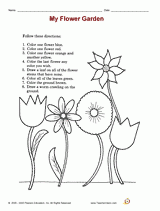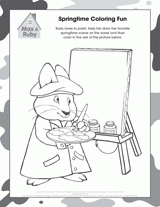Use a School Readiness Activity to provide early language thinking experiences for preschool children that will prepare them to do well in the early grades.
Grades:
Subjects:
Who Am I? - Describing a Make-Believe Character
Purpose/Skills
- To speak clearly enough to be understood by most listeners
- To use description and self-expression in verbal communication
Materials
Dress-up clothes, props
who
guess
describe
Literature Suggestion
Read a book that includes make-believe characters.
Warm-Up
Get children ready to join in some make-believe fun. Put on a crown, a funny hat, or some other prop, and pretend to be a make-believe character. Say: Can you guess who I am? Encourage more than one answer. Then tell children about your make-believe self. (Example: I am a very important queen. My name is Wanda. I live in a castle, and this crown on my head is made out of diamonds. I can have anything I want for dinner, and I play games all day long.)
Procedure
- Tell children they are going to have a chance to be anyone they want to be. Encourage them to use the clothes and props in the dress-up corner to make themselves into make-believe characters.
- Once they're all dressed up, instruct children to stand and tell about themselves, one by one. Prompt them to describe their clothes, their props, and their make-believe lives by asking questions like, "What is your name? What is that you have on your head? Where do you live? What do you do there? Who lives with you?
- As children conclude their presentations, ask the rest of the group to thank them and give them a round of applause.
Enrichment
Play a simple game of charades. Model the game for children by miming an action, like crossing the street or making a bed. Have children take turns acting out an action as the group guesses what the action is. Ask each child to tell in detail what he or she was doing. (Example: I was hopping, but I wasn't a person. I was a giant bunny rabbit hopping to my rabbit hole.)
Observation Assessment
- Proficient - The child can describe his or her attire and make-believe personality clearly enough to be understood by most listeners.
- In Process - The child tries to participate, but needs prompting and mumbles or speaks in a way that would be difficult for most people to understand.
- Not Yet Ready - Child does not yet describe a character, or speaks inaudibly.












